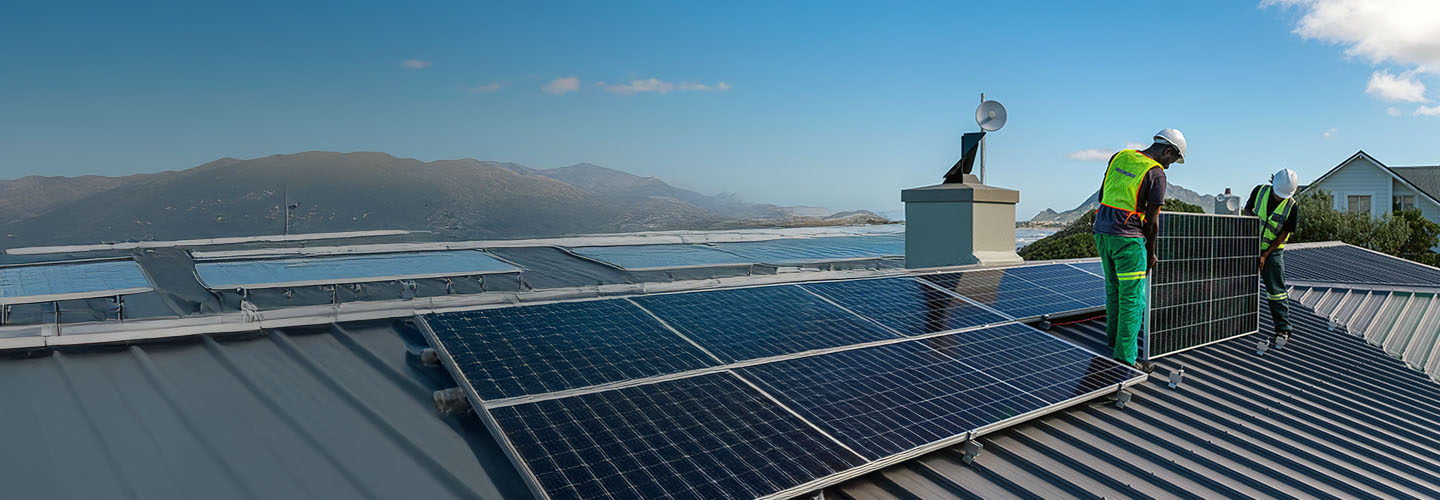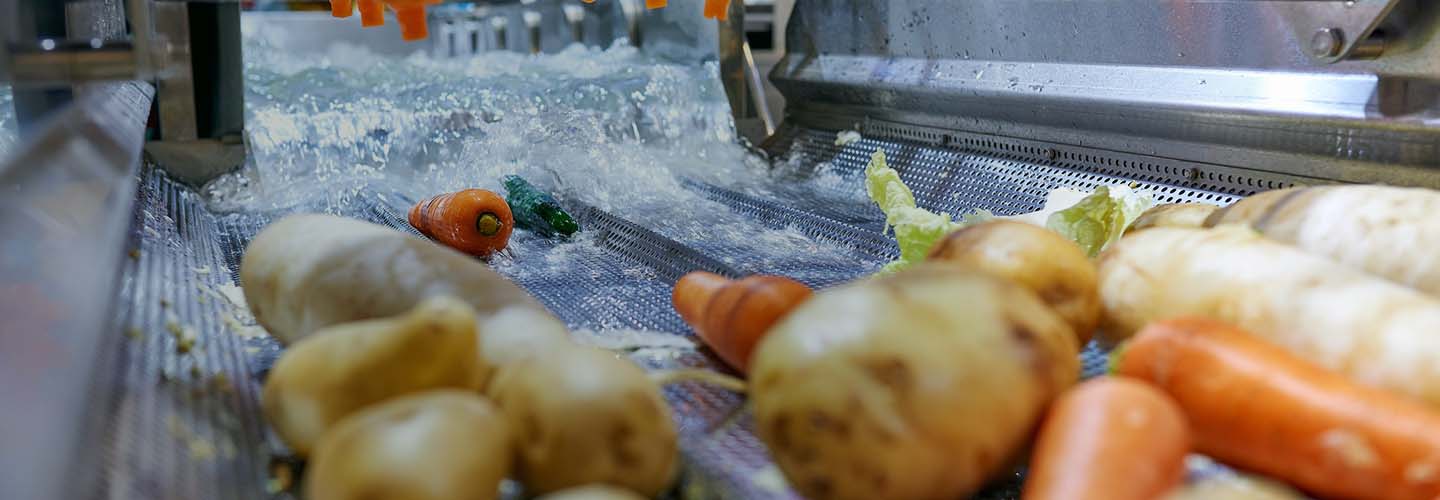Eskom grid blackouts are unlikely to disappear anytime soon. On the contrary, stage-8 load-shedding* is a real possibility. Should we get to that point, South Africans could be without power for 8 hours every day – a full workday – and companies will need to make alternative electricity plans to stay in business.
The electricity crisis coincides with the disruptions of climate change in Africa*, which is driving the need for renewable energy. Power suppliers need to plug energy gaps and deliver electricity to help drive sustainable economic growth, but at the same time reduce their greenhouse gas (GHG) emissions. The continent has seen a rapid escalation of extreme weather events, including tropical cyclones, severe droughts, wildfires, and floods.
Already, climate change in Africa has caused an estimated $38 billion in damage over the past 20 years*. Adding to this is a heavy reliance on fossil fuels: South Africa relies on coal for 80% of its power and is said to be warming twice as fast as the rest of the world*.
Switching to remote work multiplies the challenges
The trend in home-based work brought about by Covid lockdowns changed ways of working overnight, and many businesses are now exploring innovative options. Some employees can now work remotely all the time, while those in other roles may be better suited to a hybrid system that mixes remote work with time spent in the office. Although either system can lower expenses like renting office space, each presents its own challenges that include reliable electricity.
Before the pandemic, staff working on-site could remain productive during power cuts if their workplaces were equipped with industrial generators. Now that so many are working remotely, their home offices also need to remain powered up during load-shedding to maintain connectivity to the internet and their colleagues.
Generators, however, are not sustainable – whether industrial or domestic. They burn petrol or diesel and as a result, are increasingly becoming more costly to run. They also contribute to air pollution, noise pollution and, of course, GHG emissions. As a result, many bodies corporate in sectional-title private housing estates are changing their complex rules to regulate, or even prohibit, the use of generators.
Green retrofitting is becoming a requirement in South Africa, as the government is now implementing a green tax
For those now working remotely, a better solution might be a battery and inverter backup, an uninterruptable power supply (UPS) unit, or a solar-power system. Companies encouraging remote work could consider partnering with their employees to cover the cost of installing these upgrades.
Solar photovoltaic systems: an attractive alternative
Load-shedding is expected to continue indefinitely. In June 2021, the government raised the threshold for unlicensed private power generation to 100MW. This will allow residential estates, shopping centres, mines, factories, and other businesses not only to generate their own electricity, but also to sell excess power to other users via the national grid and help support economic recovery. The first 100MW generation project in the private sector, at Tronox Mineral Sands in North West*, has already been registered by the National Energy Regulator of South Africa.
Greener energy has become far more affordable. Solar photovoltaic (PV) installations are viable options for both commercial and domestic use, although battery storage can be a constraint in terms of space and cost. Ideally, PV systems with a genset (portable power source that uses a motor to generate electricity) and a UPS can be combined to deliver the most efficient green backup system.
When funding is an issue, we always suggest starting small and building up as the budget becomes available. But it’s also important to understand the desired outcome and scope of a system adequate for your needs. PV systems are relatively cost-effective if you’re only installing panels and inverters – but adding enough battery storage can raise the cost significantly.
Green retrofitting becoming essential
Green retrofitting is becoming a requirement in South Africa, as the government is now implementing a green tax on buildings that cannot prove a 20% reduction in energy and water use. By December 2022, owners of buildings of a certain size or type must have obtained a mandatory Energy Performance Certificate, or face a R5 million fine and potential jail time*. This places a huge burden on property owners. Nedbank’s Property Finance Division and the Green Building Council of South Africa will be hosting webinars for property owners to discuss the regulations and the process required.
Nedbank is an expert in financing sustainable innovations
Green retrofitting involves renovating an existing building to make it more energy- and water-efficient, more sustainable, and better for the environment. It could mean a major or minor refurbishment, which includes the installation of technology to reduce the building’s carbon footprint and its future operations. Green retrofitting depends on factors such as the structure, its current and future use, current challenges, available technologies, and budget.
While it can be expensive, there’s a perception that retrofitting costs more than constructing a new green building, which may not always be true. If you own a commercial building, you’ll need to do a thorough evaluation of both options to check which is more feasible. It is also important to link initiatives to business cases, so decisions must take reasonable payback periods into account to identify the more cost-effective option.
Supporting the transition to sustainable business
As the green bank that has been on its own sustainability journey for some years, Nedbank is an expert in financing sustainable innovations. We have fine-tuned our solutions for this market and offer specialised finance structures, such as longer payback periods, structured repayments around the savings that the infrastructure provides, and off-taking deals if the user does not own the equipment.
But running a green business involves far more than simply turning to renewable energy, and you should investigate ways to operate more sustainably before investing in costly conversions. There are always ways to use electricity more efficiently, reduce water use in operations and recycle water wherever possible, or find ways to process waste in a more resourceful manner.
Understand what your goal is. If you are planning to go off-grid, first work out how much power you require, which determines the size of the system you’ll need. Most solar-power systems are modular, so you can start with a basic mix of solar panels, inverter and battery storage, then add panels and batteries as and when required, or as budget allows.
This approach will bear fruit when you see the savings in your electricity bill or begin to earn revenue from selling power to the grid, which can help you pay off the asset. In the long run, greener practices like reducing water use and recycling grey water, or separating and recycling waste, will also deliver cost savings and new revenue streams. Ultimately, it’s a decision that’s all about the rands, cents and common sense.
Learn more about our financing solutions for solar-power installations.
*Sources:
- For millions of Africans, climate change is already here | World Economic Forum (weforum.org)
- COP26: What′s at stake for Africa? | Environment | All topics from climate change to conservation | DW | 28.10.2021
- Too Cool for Coal? The Future of South Africa’s Energy | Institut Montaigne
- https://www.dailymaverick.co.za/article/2021-06-10-increase-to-100mw-embedded-generation-threshold-will-give-oomph-to-south-african-economy-says-ramaphosa/
- Buildings in South Africa will now need this certificate – or face a R5 million fine and jail time (businesstech.co.za)








